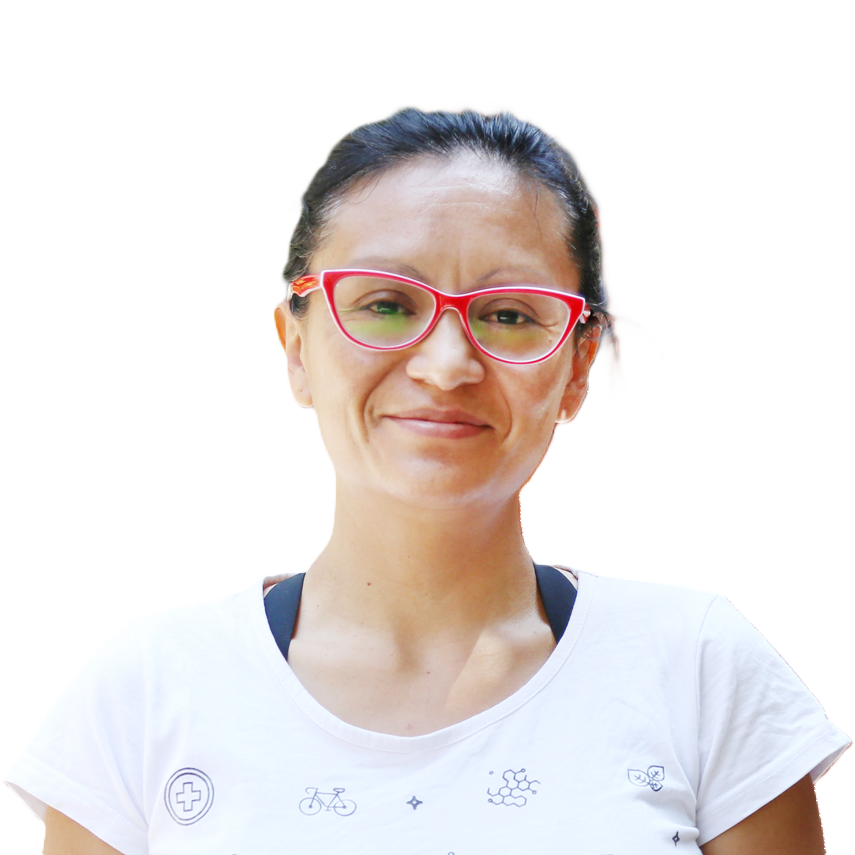Construcción Civil
Comprometidos con el desarrollo y el progreso de nuestra sociedadCristina Villamar Ayala

Ph.D Environmental Sciences
Assistant Professor in Sanitation Engineering
Department of Civil Engineering
Email: cristina.villamar@usach.cl
SUMMARY
- Currently, Cristina Alejandra Villamar Ayala is Assistant Professor in Sanitation Engineering at the Department of Civil Engineering, University of Santiago, Chile. In addition, she has worked as assistant professor at the Escuela Politécnica Nacional, Ecuador (2016-2017) and collaborated as researcher at the Universidad de Concepción, Chile (2009-2014).
- C.A. Villamar has collaborated within national researcher’s projects (FONDECYT-2004-1040987, INNOVA BIO BIO 07-PC S1-198) and international projects (PIE-BIOGAS-2016, PIMI-1406) related with characterization, treatment and revaluation of wastewater and waste. During her postdoctoral position in the Centro de Recursos Hídricos para la Agricultura y Minería (CRHIAM-CONICYT/FONDAP/15130015) collaborated in researches focused on revaluation of livestock wastewater/waste. Her research experience has generated 13 WOS publications, 14 publications with editorial committee, 3 book chapters and attendance at more than 20 congresses and/or scientific events at national/international level.
EDUCATION
- (2006) Civil Engineering, Escuela Politécnica Nacional from Quito, Ecuador.
- (2007) Diploma in Environmental Engineering, Universidad de Concepción from Concepción, Chile.
- (2008) Ms.C in Environmental Engineering, Escuela Politécnica Nacional from Quito, Ecuador.
- (2015) Ph.D. in Environmental Sciences, Universidad de Concepción from Concepción, Chile.
- (2016) Postdoctoral position, Centro de Recursos Hídricos para la Agricultura y Minería (CRHIAM) from Universidad de Concepción (Concepción, Chile).
RESEARCH AREAS
- Characterization, treatment and revaluation of wastewater and waste through biological treatment processes.
WOS PUBLICATIONS
- Villamar, C.A., Vera, I., Rivera, D., de la Hoz, F. (2018). Reuse and recycling of livestock and municipal wastewater in Chilean agriculture: a preliminary assessment. Water, 10(6): 817-839.
- Almeida, C., Espinoza, P., Muñoz, M. and Villamar, C.A. (2017). Hydraulic Retention Time influence on improving flocculation in the activated sludge processes through of polyelectrolytes. Water Air and Soil Pollution, 228(7): 253-247.
- Villamar, C.A., Rivera, D., Aguayo, M. (2016). Anaerobic co-digestion plants for the revaluation of agricultural waste: sustainable location sites from a GIS analysis. Waste Management & Research, 34(4): 316-326.
- Villamar, C.A., Rivera, D., Neubauer, M.E., Vidal, G. (2015). Nitrogen and phosphorus dynamics in a constructed wetland fed with treated swine slurry from an anaerobic lagoon. Journal of Environmental Science and Health: Part: A, 50(1): 60-71.
- Ortíz, G., Villamar, C.A., Vidal, G. (2014). Odor from anaerobic digestion of swine slurry: influence of pH, temperature and organic loading. Scientia Agricola. 71(6), 443-450.
- Villamar, C.A., Silva, J., Bay-Schmith, E., Vidal, G. (2014). Toxicity Evaluation Identification of anaerobically treated swine slurry: a comparison between Daphnia magna and Raphanus sativus. Journal of Environmental Science and Health: Part: B, 49(11), 880-888.
- Villamar, C.A., Neubauer, M.E., Vidal, G. (2014). Distribution and availability of copper and zinc in a constructed wetland fed with treated swine slurry from an anaerobic lagoon. Wetlands, 34(3), 583-591.
- Plaza de los Reyes, C., Villamar, C.A., Neubauer, M., Pozo, G., Vidal, G. (2013). Behavior of Typha angustifolia L. in a free water surface constructed wetlands for the treatment of swine wastewater. Journal of Environment Science and Health, Part A 48(10) 1216-1224.
- Villamar, C.A., Rodríguez, D.C., López, D., Peñuela, M. and Vidal, G. (2013). Effect of the generation and physical-chemical characterization of swine and dairy slurries on treatment technologies. Waste Management & Research .31(8), 820-828.
- Neubauer, M.E., Plaza de los Reyes, C. Pozo, G., Villamar, C.A.and Vidal, G. (2012). Growth and nutrient uptake by Schoenoplectus californicus (C.A. Méyer) Sójak in a constructed wetland fed with swine slurry. Journal of Soil Science and Plant Nutrition 12(3), 421-430.
- Villamar, C.A., Cañuta, T., Belmonte, M. and Vidal, G. (2012). Characterization of swine wastewater by Toxicity Identification Evaluation Methodology (TIE). Water Air & Soil Pollution 223 (1): 363-369.
- Pozo, G., Villamar, C.A., Martinez, M. and Vidal, G. (2012). Effect of organic load and nutrient ratio on the operation stability of the miving bed bioreactorfor kraft mill wastewater treatment and incidence of polyhydroxyalkanoare biosynthesis. Water Science and Technology .66(2): 370-376.
- Pozo, G., Villamar, C.A., Martinez, M. and Vidal, G. (2011). Polyhydroxyalkanoate (PHA) biosynthesis from kraft mill wastewater: biomass origin and C:N relationship influence. Water Science and Technology 6(3): 449-455.
- Villamar, C.A., Jarpa, M., Decap, J. and Vidal, G. (2009). Aerobic moving bed bioreactor performance: A comparative study of removal efficiencies of kraft mill effluents from Pinus radiata and Eucalyptus globulus as raw material, Water Science and Technology. 59(3): 507-514.
NON-INDEXED PUBLICATIONS WITH EDITORIAL COMMITTEE
- Villamar, C.A., Decap, J., Aguayo, P y Vidal, G. (2010). Rendimiento operacional de un rector de biomasa adherida movil (MBBR) para el tratamiento de efluentes de celulosa kraft. Revista de Celulosa y Papel 25(4): 24-28.
- Pozo, G., Villamar, C.A., Martínez, M. y Vidal, G. (2010). De Ril a Plástico: Obtención de subproductos de alto valor añadido en sistemas de tratamiento biológico aeróbico de la industria de celulosa kraft. Induambiente 18(104), 22-25.
BOOKS AND BOOK CHAPTERS
- Villamar, C.A., Vidal, G. (2012). Capítulo Minimización en el origen: Indicadores productivos y características físico-químicas como herramientas para la gestión en el tratamiento y disposición de purines. Aportes a la gestión y optimización de la tecnología ambiental del sector porcino. ISSN: 978-956-227-367-1.
- Ortíz, G. Villamar, C.A., Vidal, G. (2012). Capítulo Minimización en el origen: Efecto del pH y la temperatura en la generación de olor durante el almacenamiento de purín porcino. Aportes a la gestión y optimización de la tecnología ambiental del sector porcino. ISSN: 978-956-227-367-1. Neubauer, M.E., Pozo, G., Villamar, C.A., Plaza de los Reyes, C., Vidal, G. (2012). Capítulo Recuperación de nutrientes desde purines porcinos: Recuperación de nutrientes por Schoenoplectus californicus (C.A. Méyer) Sókaj. En un humedal construido alimentados con purín de cerdo. Aportes a la gestión y optimización de la tecnología ambiental del sector porcino. ISSN: 978-956-227-367-1.


